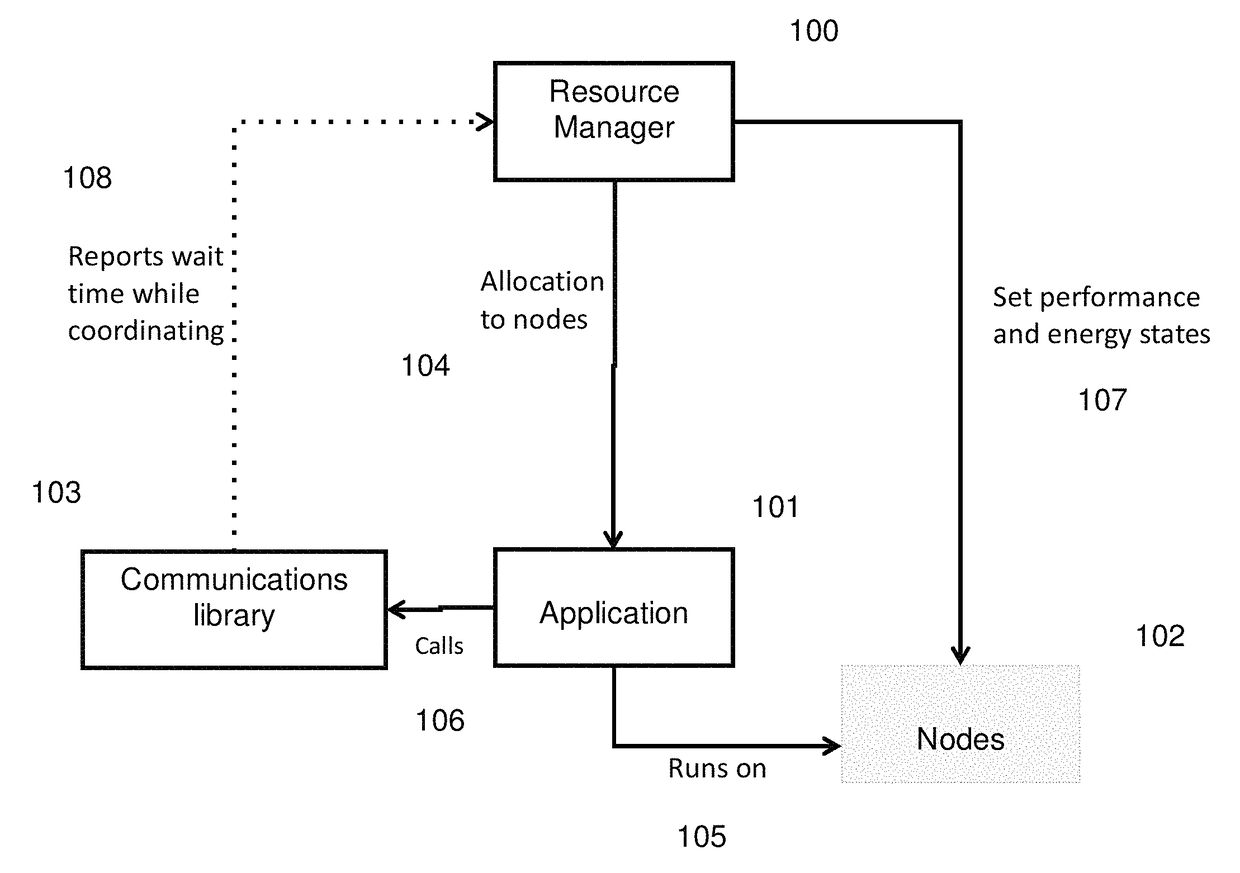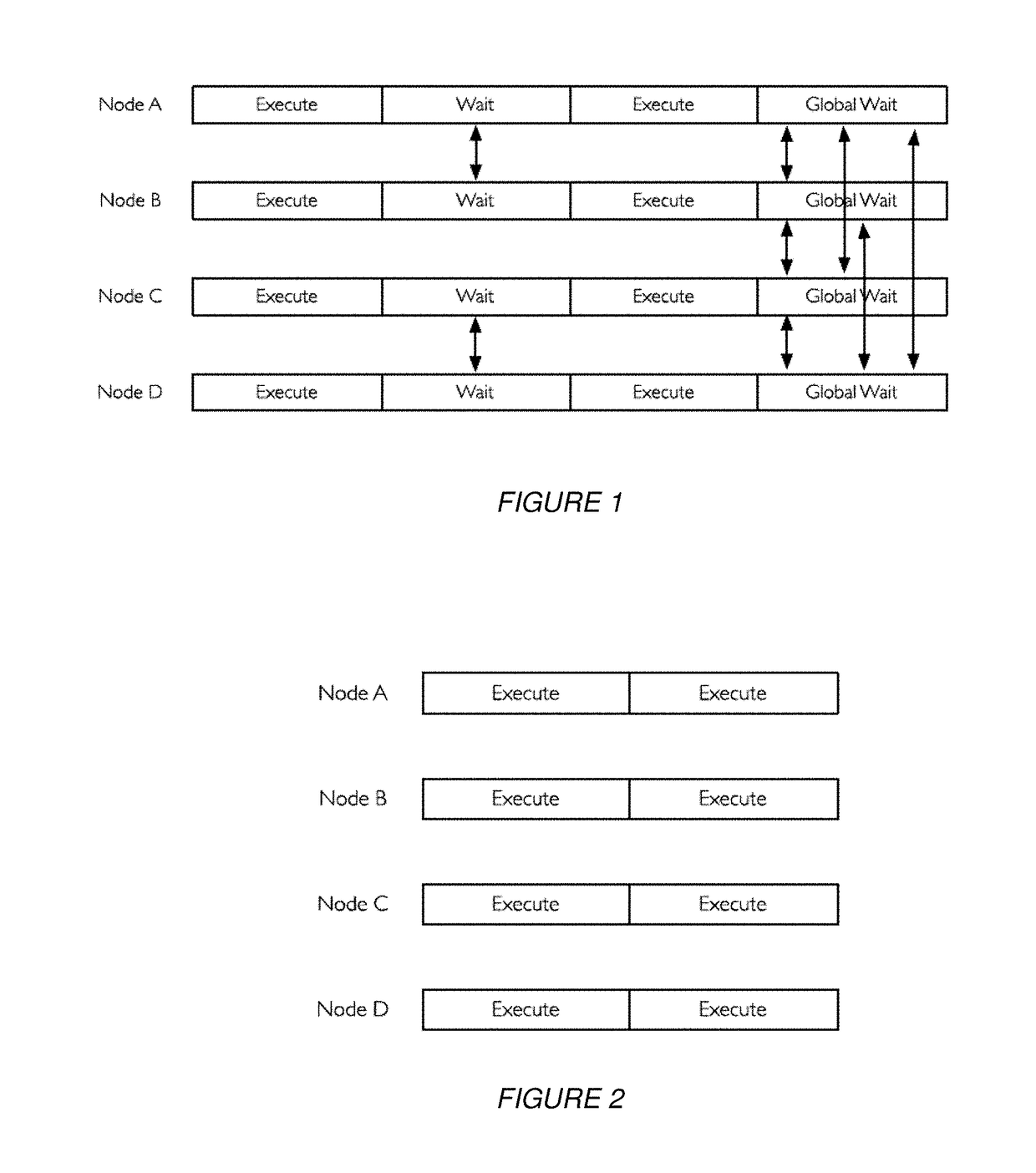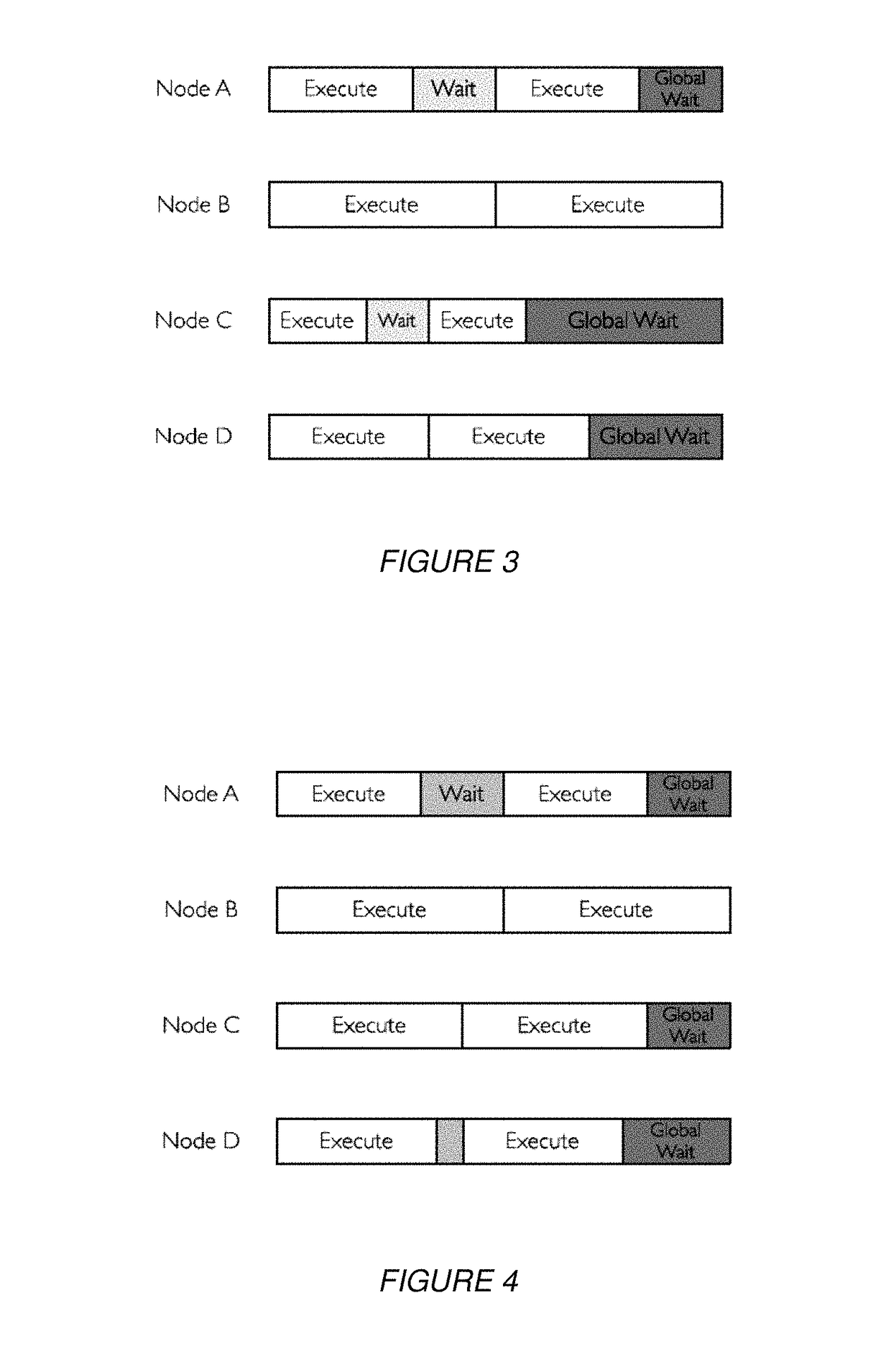Method of executing an application on a computer system, a resource manager and a high performance computer system
a resource manager and computer system technology, applied in high-level techniques, multi-programming arrangements, instruments, etc., can solve the problems of adverse effects on the performance of compute-bound applications, increase energy consumption, and cost of computational performance, and achieve the effect of small impact on the run-time of applications, optimal efficiency, and fine tuning of energy us
- Summary
- Abstract
- Description
- Claims
- Application Information
AI Technical Summary
Benefits of technology
Problems solved by technology
Method used
Image
Examples
Embodiment Construction
[0060]Reference will now be made in detail to the embodiments, examples of which are illustrated in the accompanying drawings, wherein like reference numerals refer to the like elements throughout. The embodiments are described below to explain the present invention by referring to the figures.
[0061]As indicated above, embodiments address the problem of reducing the amount of energy consumed by programs running on large-scale computer systems, particularly high performance computing (HPC) systems, in which tasks are allocated to nodes by a Resource Manager.
[0062]The role of the Resource Manager is to allocate the tasks amongst the nodes so that an appropriate quality of service measure is reached e.g. a group of tasks is completed in the shortest time, or a particular task finishes by a certain time. Resource managers use sophisticated algorithms and heuristics that rely on knowledge of the availability of resources in the HPC system. Resources can include processor time, server mem...
PUM
 Login to View More
Login to View More Abstract
Description
Claims
Application Information
 Login to View More
Login to View More - R&D
- Intellectual Property
- Life Sciences
- Materials
- Tech Scout
- Unparalleled Data Quality
- Higher Quality Content
- 60% Fewer Hallucinations
Browse by: Latest US Patents, China's latest patents, Technical Efficacy Thesaurus, Application Domain, Technology Topic, Popular Technical Reports.
© 2025 PatSnap. All rights reserved.Legal|Privacy policy|Modern Slavery Act Transparency Statement|Sitemap|About US| Contact US: help@patsnap.com



